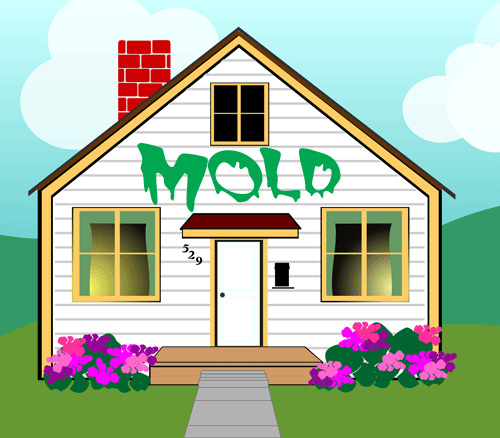


|
|
|
||||||||||||||||||
|
 |
||||||||||||||||||
|
|
|||||||||||||||||||
|
How to have Proper Indoor Humidity  Summer days, you can feel the effects of humidity, sticky skin, feeling sweaty, air is thick with moisture. But when humidity enters inside your home, those outside humid feelings and signs are replaced by itching, sneezing and coughing, and they're not limited to the summer. Humidity and sneezing: Humidity is the amount of water vapor in the air. How can that microscopic water molecules can make you itch, sneeze and cough? The symptoms are allergic reactions to the Organisms that thrive in humidity. Humidity promotes mold growth and dust mite population growth. Both are indoor allergens that can set off allergic reactions and can trigger rhinitis and asthma, " said Dr. Michael Ruff ", an allergist who works to raise awareness about asthma and allergies for the American Academy of Allergy Asthma and Immunology. These are things that people can't see or feel, but they live on counter tops, table surfaces, carpet, pillows, mattresses, just about anywhere that people are. They depend on warm temperatures and high humidity to live and grow. If having mold or dust mites problems making you ill, then keeping the humidity inside your home at 50 percent or lower may provide some relief, lower humidity will result in lower mold and dust mite growth. Too dry isn't good! Don't let the air inside your house get too dry, low humidity can cause, skin irritation, dry skin, breathing issues, irritate your nasal passages and throat, bloody noses and cracked lips and make your eyes itchy, and static electricity are common problems when indoor humidity is too low. Low indoor humidity is a bigger issue in winter months, when heaters and cooler temperatures combine to lower the moisture levels in the air. Humidifiers can ease problems caused by dry air. Humidifiers can help soothe these familiar problems caused by dry indoor air. Humidifiers can also help ease symptoms of a cold or another respiratory condition. But be cautious, humidifiers can be useful, but they can actually make you sick if they aren't maintained properly or if humidity levels stay too high. If you do use humidifiers, play it safe: Monitor humidity levels and keep your humidifier clean, dirty humidifiers can breed mold or bacteria that can make you sick. If you have allergies or asthma, talk to your doctor before using a humidifier. Wet House: The airborne water can be damage to your home, as well as your health. High humidity in a home can cause rot. And, especially in the South, it draws pests. Bugs are always looking for water. Condensation provides bugs with the water they need. Moisture can condense inside walls and cause rot. It's not obvious on the outside, but it could be rotting on the inside.High humidity can make your home feel stuffy and can cause condensation on walls, floors and other surfaces that triggers the growth of harmful bacteria, dust mites and molds. These allergens can cause respiratory problems and trigger allergy and asthma flare-ups. Solutions: How to measure humidity? if you suspect that the air in your home is too moist or too dry, then the first thing to do is verify the facts. The best way to test humidity levels in your house is with a hygrometer. It looks like a thermometer, measures the amount of moisture in the air. Hygrometers can be purchased at hardware stores and department stores. When buying a humidifier, consider purchasing one with a built-in hygrometer (humidistat) that maintains humidity within a healthy range. Then, if the indoor humidity is too high, experts recommend you tackle the problem with dehumidifiers, ventilation, air conditioning and even what you put on your floors. Vent the areas that create moisture, like the shower or bathroom. Make sure you turn on the vent fans if you have them or consider having an electrician install one to the outside .of your home. The same is true for cooking. Use a house Air exchanger such as Nu Air The Eliminator. Humidifiers, asthma and allergies: If you or your child has asthma or allergies, talk to your doctor before you start using a humidifier. Increased humidity may ease breathing in children and adults who have asthma or allergies, especially during a respiratory infection such as a cold. But dirty mist, or increased growth of allergens caused by high humidity, can trigger or worsen asthma and allergy symptoms. Keep it clean: Dirty humidifiers and health problems: Dirty reservoirs and filters in humidifiers can quickly breed bacteria and mold. Dirty humidifiers can be unhealthy for people with asthma and allergies, but even in healthy people humidifiers have the potential to trigger flu-like symptoms or even lung infections when the contaminated mist or steam is released into the air. Steam vaporizers or evaporators may be less likely to release airborne allergens than may cool-mist humidifiers. According to the Mayo Clinic Tips for keeping your humidifier clean: To keep humidifiers free of harmful mold, fungi and bacteria, follow the guidelines recommended by the manufacturer. These tips for portable humidifiers also can help. 1. Use distilled or demineralized water. Tap water contains minerals that can create deposits inside your humidifier that promote bacterial growth. And, when released into the air, these minerals often appear as white dust on your furniture. You may also breathe in some minerals that are dispersed into the air. Distilled or demineralized water contains has a much lower mineral content compared with tap water. In addition, use demineralization cartridges or filters if recommended by the manufacturer. 2. Change humidifier water often. Don't allow film or deposits to develop inside your humidifiers. Empty the tanks, dry the inside surfaces and refill with clean water every day if possible. 3. Clean humidifiers every three days. Unplug the humidifier before you clean it. Remove any mineral deposits or film from the tank or other parts of the humidifier with a 3 percent hydrogen peroxide solution, which is available at pharmacies. Some manufacturers recommend using chlorine bleach or other disinfectants. 4. Always rinse the tank after cleaning to keep harmful chemicals from becoming airborne and then inhaled. 5. Change humidifier filters regularly. If the humidifier has a filter, change it at least as often as the manufacturer recommends and more often if it's dirty. 6. Keep the area around humidifiers dry. If the area around a humidifier becomes damp or wet including windows, carpeting, drapes or tablecloths turn the humidifier down or reduce how frequently you use it. 7. Prep humidifiers for storage. Drain and clean humidifiers before storing them. And then clean them again when you take them out of storage for use. Throw away all used cartridges, cassettes or filters. 8. Follow instructions for central humidifiers. If you have a humidifier built into your central heating and cooling system, read the instruction manual or ask your heating and cooling specialist about proper maintenance. 9. Consider replacing old humidifiers. Over time, humidifiers can build up deposits that are difficult or impossible to remove and encourage growth of bacteria. When the air's too damp: Dehumidifiers, Air exchanger, and air conditioners. 1. Use an air conditioner. Central or window-mounted air conditioning units dry the air, keeping indoor humidity at a comfortable and healthy level. 2. Air exchanger such as the Nu Air Eliminator vents dust mites, mold spores and mold gas, helps vent radon gas, replaces the air approx. 8 times per day, removes excess humidity year round. 3. Use a dehumidifier. These devices collect excess moisture from the air, lowering humidity levels. Dehumidifiers work like air conditioners, without the cooling effect. They're often used to help dry out damp basements. Carpet can actually trap moisture, lowering indoor air quality. Carpet is one of the favorite homes of humidity-loving dust mites. Use a Air Exchange unit to help remove mold spores and dust mites. Consider removing carpets at some point. |
|
|
|
|
| Site Map |

